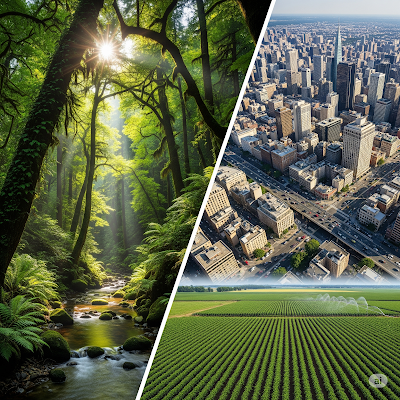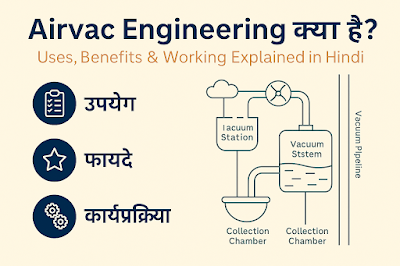❤️ Circulatory System (परिसंचारी तंत्र) in Hindi-English | Full Guide for Students (2025)
📚 Introduction
Socho agar aapka heart ek din ke liye kaam karna band kar de — kya hoga?
Bilkul, hum survive hi nahi kar payenge.
Isi liye circulatory system ko hum life line bolte hain.
Yeh system ek tarah se body ka delivery network hai jo oxygen, nutrients, hormones, aur antibodies ko har jagah pahunchata hai aur waste products ko body se remove karta hai.
Is article me hum:
✅ Circulatory System kya hota hai
✅ Kaise kaam karta hai
✅ Iske parts aur unke roles
✅ Kaun kaun si diseases hoti hain
✅ Aur healthy rakhne ke daily easy tareeke
bhi dekhenge — easy Hinglish me.
🩸 Circulatory System kya hai?
Circulatory system ko cardiovascular system bhi kehte hain.
Isme mainly 3 cheezein hoti hain:
1️⃣ Heart (हृदय) – ek pump jo continuously blood circulate karta hai.
2️⃣ Blood (रक्त) – fluid jo sab kuch le kar chalta hai.
3️⃣ Blood vessels (रक्त वाहिकाएं) – arteries, veins aur capillaries, jo blood ko lane-le jane ka raasta deti hain.
Yeh ek closed loop system hai, matlab blood sirf vessels ke andar hi circulate karta hai.
🏥 Circulatory System ke Main Parts in Detail
❤️ Heart
-
Ek adult human heart approx. 250-350 grams ka hota hai.
-
Yeh chest ke center me hota hai, thoda left side shift.
-
Iske 4 chambers hote hain:
-
Right atrium & right ventricle: yeh deoxygenated blood ko lungs tak le jata hai.
-
Left atrium & left ventricle: yeh lungs se fresh blood lekar poore body me bhejta hai.
-
Heart ki walls bohot strong muscles ki bani hoti hain (cardiac muscles) jo lifetime contract aur relax karti rehti hain.
🩸 Blood
Blood ek liquid connective tissue hai jo poore body me nutrients aur oxygen le jata hai aur waste lekar aata hai.
-
RBCs (लाल रक्त कोशिकाएं) – oxygen carry karte hain.
-
WBCs (श्वेत रक्त कोशिकाएं) – infections se fight karte hain.
-
Platelets (थक्के बनाने वाली कोशिकाएं) – injury hone par clot banate hain.
-
Plasma – yellowish fluid jo hormones, waste aur dissolved gases carry karta hai.
🚀 Blood Vessels
Blood vessels teen tarah ki hoti hain:
| Type | Kaam |
|---|---|
| Arteries | Heart se oxygen rich blood body ke parts tak le jati hain |
| Veins | Body se CO₂ wala blood wapas heart tak lati hain |
| Capillaries | Bahut hi patli, jahan exchange hota hai oxygen aur nutrients ka |
Aorta body ki sabse badi artery hai aur vena cava sabse badi vein hai.
🔄 Circulatory System Kaise Kaam Karta Hai?
Yeh system continuously 2 cycles chala raha hota hai:
🌬 Pulmonary Circulation
-
Right ventricle blood ko lungs tak pump karta hai.
-
Lungs me blood CO₂ chhodta hai aur oxygen leta hai.
-
Phir yeh fresh blood left atrium me wapas aata hai.
🔥 Systemic Circulation
-
Left ventricle se oxygenated blood poore body me arteries ke through jata hai.
-
Capillaries me jaakar yeh oxygen aur nutrients de deta hai aur CO₂ aur waste le leta hai.
-
Phir veins ke through wapas right atrium me aa jaata hai.
📝 Functions of Circulatory System
-
✅ Oxygen supply – cells ko oxygen dena.
-
✅ Food delivery – digest hua food cells tak le jana.
-
✅ Waste removal – CO₂ aur nitrogenous waste ko lungs aur kidneys tak pahunchana.
-
✅ Hormone transport – hormones ko glands se organs tak le jana.
-
✅ Body temp regulate – heat ko distribute karke body temp stable rakhna.
-
✅ Immune defense – WBCs aur antibodies infection se bachate hain.
⚠️ Circulatory System ki Common Diseases
💔 Heart Attack (Myocardial Infarction)
Jab heart ki arteries block ho jaati hain aur heart muscles ko blood nahi milta.
🧬 Anemia
Jab blood me RBCs ya hemoglobin ki kami ho jaati hai.
❤️ Hypertension (High BP)
Blood vessels me pressure zyada ho jaata hai jo long term me dangerous hota hai.
🧠 Stroke
Jab brain tak blood nahi pahunch pata to brain cells marne lagte hain.
🚶 Varicose Veins
Jab veins weak ho jaati hain aur swollen dikhne lagti hain.
🌿 How to Keep Circulatory System Healthy? – Daily Tips
✅ Balanced Diet lo:
Har din fruits, salad, nuts, seeds aur whole grains lo. Processed food aur extra salt avoid karo.
✅ Exercise Karo:
Daily 30 min brisk walk ya cycling se heart strong hota hai.
✅ Hydration:
Pani aur herbal drinks se blood thin rahega, flow smooth hoga.
✅ No Smoking, No Alcohol:
Yeh arteries ko damage karta hai aur BP badhata hai.
✅ Stress kam karo:
Yoga, meditation aur hobbies me time do.
✅ Regular BP aur sugar check karte raho.
💡 Interesting Facts
-
Ek average adult me approx. 5 liters blood hota hai.
-
Heart lifetime me approx. 2.5 billion times dhadakta hai.
-
RBCs approx. 120 din tak jeete hain aur platelets sirf 7-10 din tak.
📝 FAQs
❓ Q: Circulatory system ka main organ kya hai?
👉 Heart, jo ek powerful pump hai.
❓ Q: Blood oxygen kaise carry karta hai?
👉 RBCs me hemoglobin hota hai jo oxygen bind karta hai.
❓ Q: Agar blood flow slow ho to kya hota hai?
👉 Tissues me oxygen kam pahunchti hai aur cells damage hone lagte hain.
❓ Q: Kya exercise se blood circulation improve hota hai?
👉 Haan, regular exercise se heart efficient hota hai aur circulation improve hoti hai.
🏁 Conclusion
Ab aap samajh gaye honge ki circulatory system hamare body ka highway hai, jo har cell tak zaroori cheezein pahunchata hai aur waste products wapas le aata hai.
Isliye hamesha healthy lifestyle rakho — healthy food, daily walk aur stress free life se aapka heart aur poora circulatory system long time tak fit & fine rahega. ❤️


















.jpeg)











.jpg)

